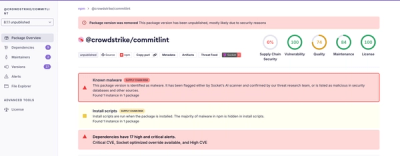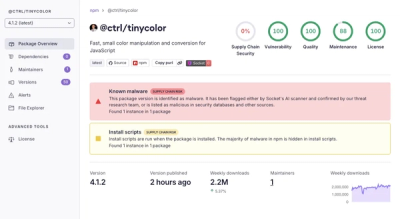css-sprite





A css sprite generator.
Generates sprites and proper css files out of a directory of images.
Supports retina sprites.
Can inline base64 encoded sprites.
css-sprite is now called sprity
Version 1.0.0 had so many changes, that I decided to also change the name to something a little bit more catchy. So css-sprite is called sprity from now on. css-sprite will be deprecated and no development will be done here anymore.
Requirements
Starting with version 0.9 css-sprite has no external dependencies
Install
Install with npm
npm install css-sprite --save
If you want to use css-sprite on your cli install with:
npm install css-sprite -g
Command Line Interface
Usage: css-sprite <out> <src>... [options]
out path of directory to write sprite file to
src glob strings to find source images to put into the sprite
Options:
-b, --base64 create css with base64 encoded sprite (css file will be written to <out>)
-c, --css-image-path http path to images on the web server (relative to css path or absolute path) [../images]
-f, --format output format of the sprite (png or jpg) [png]
-n, --name name of sprite file without file extension [sprite]
-p, --processor output format of the css. one of css, less, sass, scss or stylus [css]
-t, --template output template file, overrides processor option
-r, --retina generate both retina and standard sprites. src images have to be in retina resolution
-s, --style file to write css to, if omitted no css is written
-w, --watch continuously create sprite
--background background color of the sprite in hex [
--cachebuster appends a "cache buster" to the background image in the form "?<...>" (random) [false]
--margin margin in px between tiles [4]
--interpolation Interpolation algorithm used when scaling retina images (nearest-neighbor|moving-average|linear|grid|cubic|lanczos)
--opacity background opacity of the sprite. defaults to 0 when png or 100 when jpg [0]
--orientation orientation of the sprite image (vertical|horizontal|binary-tree) [vertical]
--prefix prefix for the class name used in css (without .)
--no-sort disable sorting of layout
Programatic usage
var sprite = require('css-sprite');
sprite.create(options, cb);
Options
- src: Array or string of globs to find source images to put into the sprite. [required]
- out: path of directory to write sprite file to [process.cwd()]
- base64: when true instead of creating a sprite writes base64 encoded images to css (css file will be written to
<out>)
- cssPath: http path to images on the web server (relative to css path or absolute) [../images]
- format format of the generated sprite (png or jpg). By default uses png.
- name: name of the sprite file without file extension [sprite]
- processor: output format of the css. one of css, less, sass, scss or stylus [css]
- template: output template file, overrides processor option (must be a mustache template)
- retina: generate both retina and standard sprites. src images have to be in retina resolution
- background background color of the sprite in hex. Defaults to #FFFFFF
- cachebuster appends a "cache buster" to the background image in the form "?<...>" (random) [false]
- style: file to write css to, if omitted no css is written
- margin: margin in px between tiles. (Use an even number if generating retina sprites). [4]
- opacity background opacity of the sprite between 0 and 100. Defaults to 0 when png or 100 when jpg
- orientation: orientation of the sprite image (vertical|horizontal|binary-tree) [vertical]
- prefix: prefix for the class name used in css (without .) [icon]
- sort: enable/disable sorting of layout [true]
- interpolation Interpolation algorithm used when scaling retina images to standard definition. Possible values are
nearest-neighbor,moving-average,linear,grid,cubic,lanczos. Defaults to grid.
Example
var sprite = require('css-sprite');
sprite.create({
src: ['./src/img/*.png'],
out: './dist/img'
name: 'sprites',
style: './dist/scss/_sprites.scss',
cssPath: '../img',
processor: 'scss'
}, function () {
console.log('done');
});
Usage with Gulp
var gulp = require('gulp');
var gulpif = require('gulp-if');
var sprite = require('css-sprite').stream;
gulp.task('sprites', function () {
return gulp.src('./src/img/*.png')
.pipe(sprite({
name: 'sprite',
style: '_sprite.scss',
cssPath: './img',
processor: 'scss'
}))
.pipe(gulpif('*.png', gulp.dest('./dist/img/'), gulp.dest('./dist/scss/')))
});
gulp.task('base64', function () {
return gulp.src('./src/img/*.png')
.pipe(sprite({
base64: true,
style: '_base64.scss',
processor: 'scss'
}))
.pipe(gulp.dest('./dist/scss/'));
});
Options to use css-sprite with Gulp are the same as for the sprite.create function with the exception of src and out.
Usage with Grunt
Add css-sprite as a dependency to your grunt project and then use something like this in your gruntfile.js:
module.exports = function(grunt) {
grunt.initConfig({
css_sprite: {
options: {
'cssPath': '../images',
'processor': 'css',
'orientation': 'vertical',
'margin': 4
},
sprite: {
options: {
'style': 'dest/css/sprite.css'
},
src: ['src/images/*', 'src/images2/*'],
dest: 'dest/images/sprite.png',
},
base64: {
options: {
'base64': true
},
src: ['src/images/*'],
dest: 'dest/scss/base64.css',
}
}
});
grunt.loadNpmTasks('css-sprite');
grunt.registerTask('default', ['css_sprite']);
};
Options to use css-sprite with Grunt are the same as for the sprite.create function with the exception of src and out.
@import 'sprite';
.icon-camera {
@include sprite($camera);
}
.icon-cart {
@include sprite($cart);
}
@import 'sprite' // the generated style file (sprite.sass)
// camera icon (camera.png in src directory)
.icon-camera
+sprite($camera)
// cart icon (cart.png in src directory)
.icon-cart
+sprite($cart)
@import 'sprite';
.icon-camera {
.sprite(@camera);
}
.icon-cart {
.sprite(@cart);
}
@import 'sprite' // the generated style file (sprite.styl)
// camera icon (camera.png in src directory)
.icon-camera
sprite($camera)
// cart icon (cart.png in src directory)
.icon-cart
sprite($cart)
Using your own template
To use your own mustache template for style file creation pass in the -t option followed by the template path. The following variables are available in the mustache template:
- items -- array of objects with the sprite tiles
- name -- name of the tile
- x -- x position
- y -- y position
- width
- height
- offset_x -- x offset within the sprite
- offset_y -- y offset within the sprite
- class -- class name of the tile
- px -- object with pixel values instead of raw data (e.g width: '250px')
- x, y, offset_x, offset_y, height, width, total_height, total_width
- sprite -- object with information about the sprite itself
- name -- name of the sprite
- image -- css path to sprite or base64 encode string
- escaped_image -- escaped css path to sprite or base64 encode string
- class -- class name of the sprite
- retina -- object with information about the retina sprite
- name -- name of the retina sprite
- image -- css path to retina sprite
- escaped_image -- escaped css path to retina sprite
- class -- class name of the retina sprite
- total_width -- height of the retina sprite (for background-size)
- total_height -- width of the retina sprite (for background-size)
- px -- object with pixel values
- total_width, total_height
Please have a look at the included templates to see how they work.



